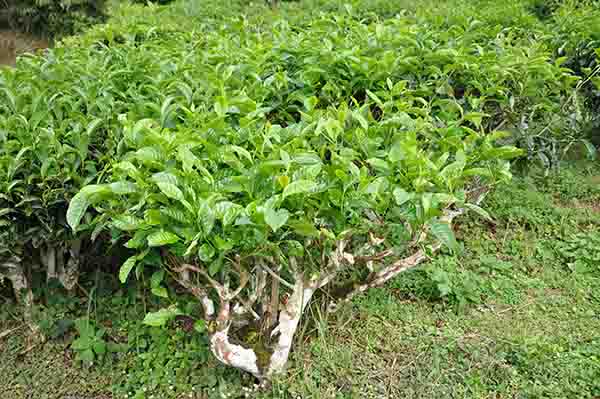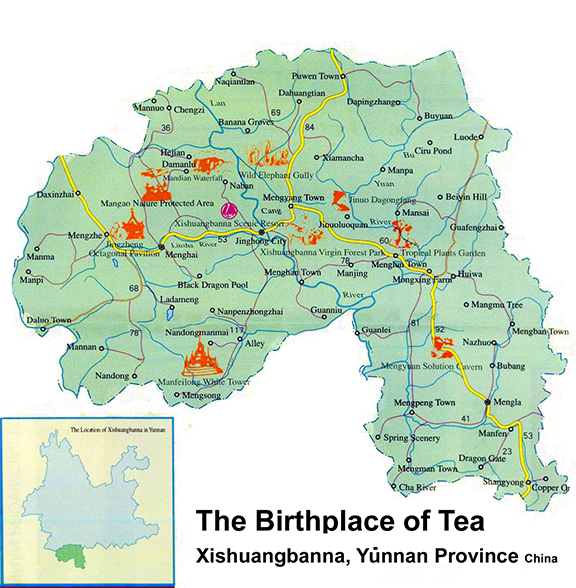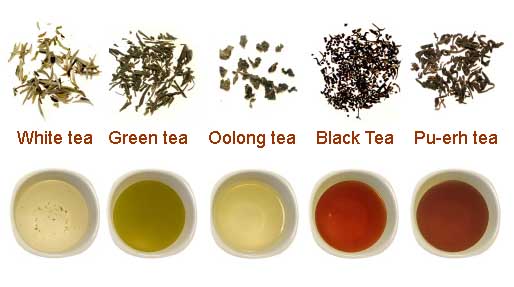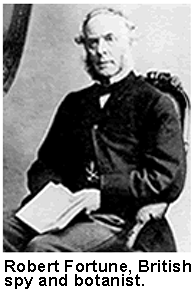The Universe of Tea and it's varieties.
From the Chinese using it in medicine, to American revolutionaries dumping it into the Boston Harbor, tea is more than just a mere beverage, it has become a legend. Though it has played a central role in political upheaval, commerce and medicine, it comes from a meek plant native to central and eastern Asia.

The scientific name of the tea plant is camellia sinensis. This temperamental plant is greatly affected by variations of soil, elevation, and climate, and is believed to have originated in Xishuangbanna, in the Chinese province of Yunnan. The brew we get from steeping its leaves is consumed by millions and second only to water in the world of beverages. Tea has been adapted and adopted into many different cultures. Long before Westerners saw it as an aristocratic beverage for the elite, the Chinese drank it simply for its medicinal properties. Over 4,000 years ago the properties of tea were praised by the “Divine Emperor,” Shen Nong, as giving “joy to the body and sparkle to the eyes.” Today, Science has uncovered many health benefits derived from consuming this soothing drink.

There are many different methods and processes used to arrive at a specific final product, e.g. black tea, oolong tea, green tea, white tea, pu-erh tea etc. Over the centuries, the Chinese methods of processing tea leaves as well as methods of preparing it have evolved considerably. For centuries these “trade secrets” were not known to the Western world. In fact, before the British spy, Robert Fortune discovered China’s tea growing secrets, Europeans believed that green tea and black tea came from different plants.This botanist and spy, sent by the British because of supply chain problems, disguised himself as a tea merchant.
He managed to gain access to Chinese tea gardens and pick up enough clues to understand the mysterious process that produced this famous black tea that Europeans were gaining such a liking toward. In total, Fortune stayed in China for about two and a half years, from 1848 to 1851. Fortune introduced about 20,000 tea plants and seedlings to India, which previously had no tea industry at all. Not only was Fortune's purchase of tea plants forbidden by the Chinese government at the time, but his travels were also beyond the allowable day's journey from the European treaty ports. He was not caught though and returned to India with his 20,000 tea plants and a labor force to begin tea production in India, thus, the tea industry of India was born! This move would ultimately help solve the growing British supply problem.
While traveling China, Robert Fortune discovered that ALL tea comes from the same plant: Camellia sinensis. The five most common categories or families of tea made from this plant are: White, Green, Oolong, Black and Pu-erh. Note: Herbal teas, also known as tisanes, or herbal infusions, are actually not “tea” at all but, as implied, dried flowers, fruits or herbs infused in boiling water. Consumed for medicinal reasons or as a caffeine-free alternative to tea.
What defines the categories of tea, is Oxidizing. Oxidation occurs when the enzymes in the tea leaf interact with oxygen, after the cells are broken down. This process can be accelerated through rolling, cutting, or crushing, or left to a slower natural decomposition of the leaf. It is the same process that will turn a banana brown when left to sit. Bruise the banana and it will brown much more quickly. The same goes for apples and other fruit. Now, interestingly, if you bake the fruit, it will not oxidize. The delicious, golden-white apple slices inside a pie will not brown as they would when raw. This is because heat (at or above 130 degrees) stops enzymatic activity and oxidation.

Within these different families, each have scores of variation and styles. We will go over what makes the main families or categories of tea in further blog articles, hopefully keeping it interesting as to not bestow you with boredom!

